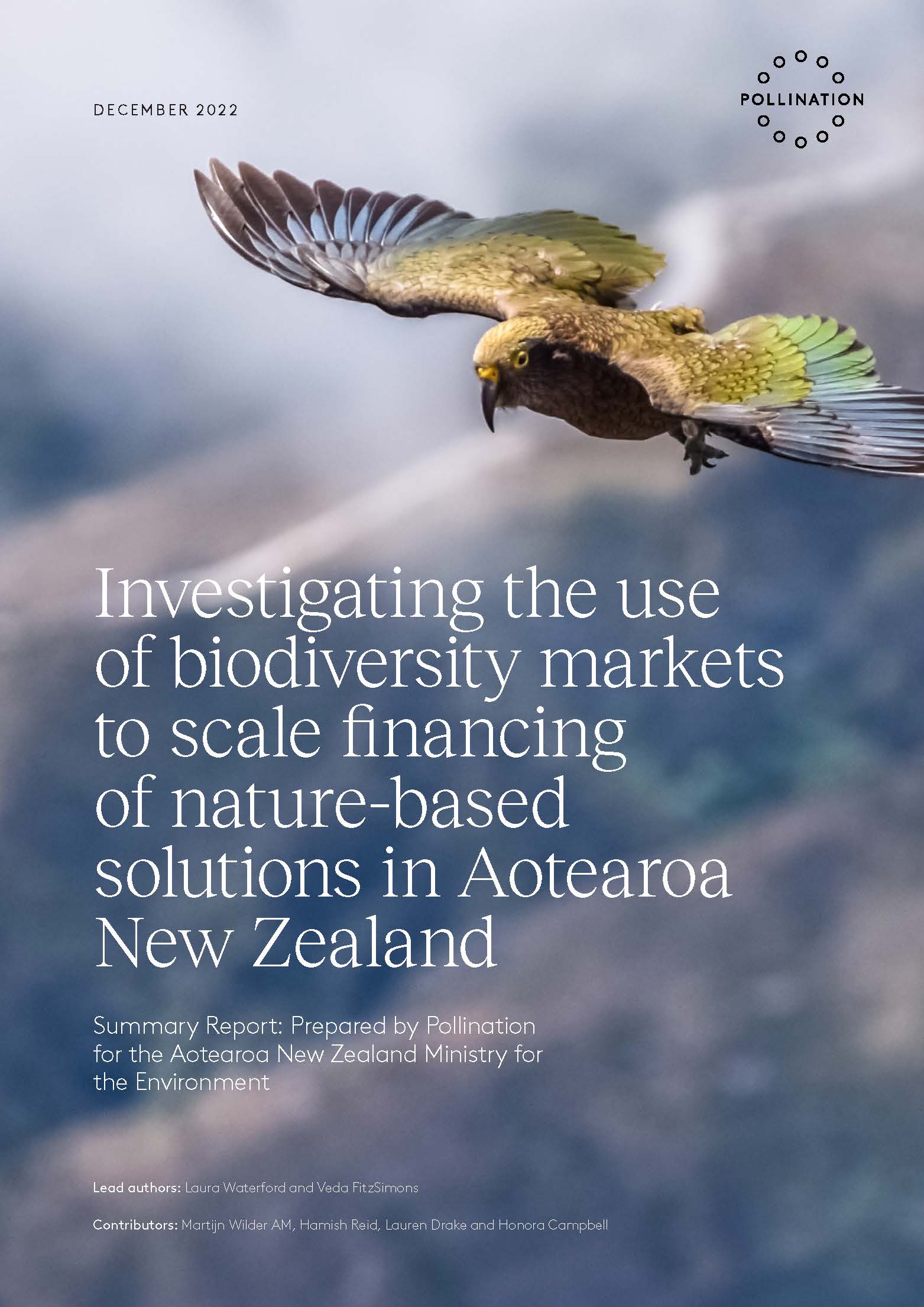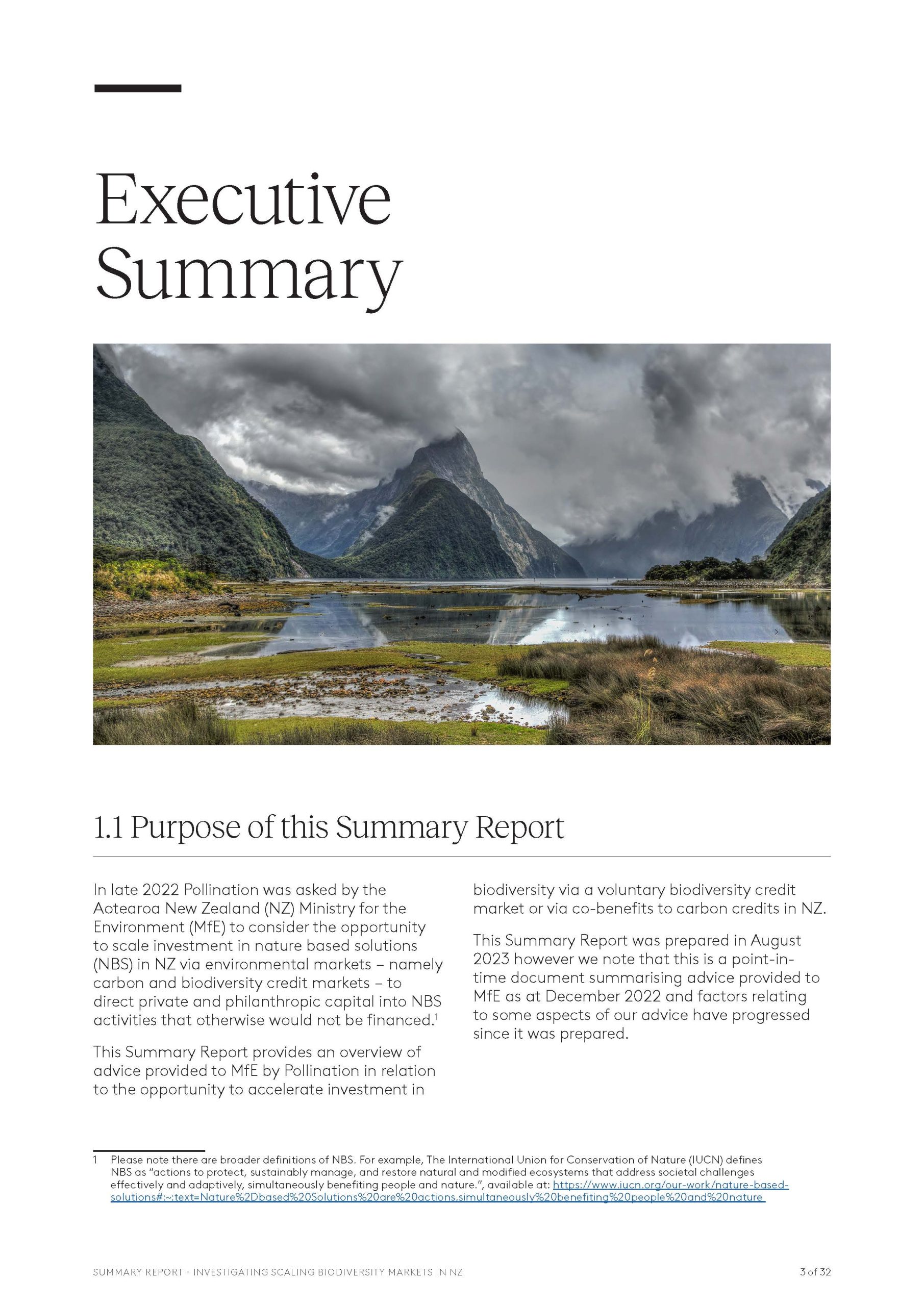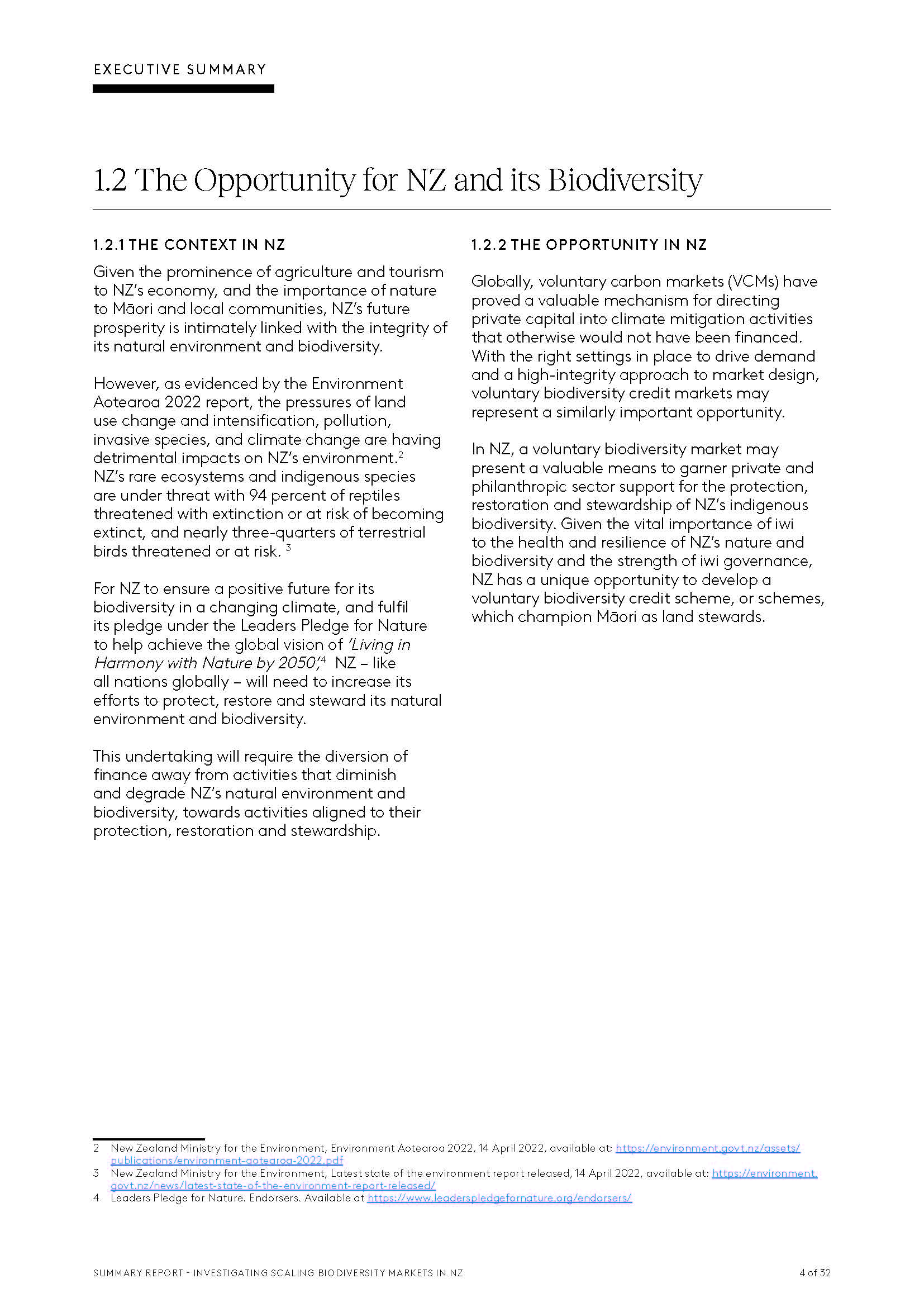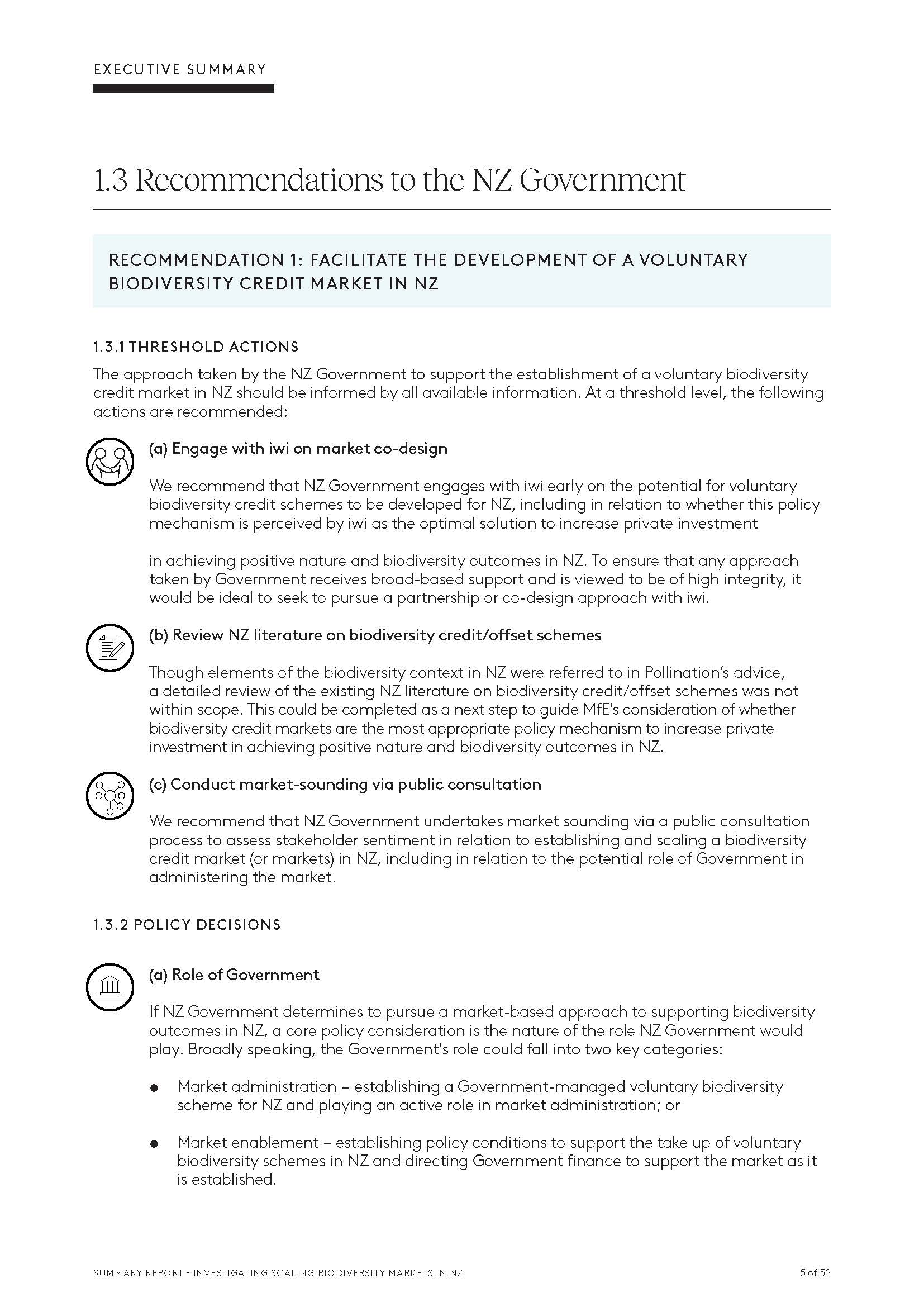Partnerships for Nature: insights from Indigenous-led models in Canada
15 April 2025 / WORDS BY Pollination Foundation
read article
London+44 203 355 1556
Sydney+61 2 8313 7109
Melbourne +61 2 8313 7109
Washington +1 872 201 1168
In this second edition of Nature Finance Focus, we highlight a number of models that are helping to unlock and scale nature investment. Some models are well established, alongside others in which we see significant promise and growth. By showcasing these tangible case studies, we aim to provide ideas and options which can be taken up by the global bank or investor, or by the major corporate.
The report also details the findings of our biennial survey of 500 institutional investors across the UK, USA, Australia, Singapore and Japan.
View reportFour years ago, when Climate Asset Management launched as a joint venture between HSBC and recently formed consultancy Pollination, it laid out ambitious plans to become the biggest investor dedicated to natural capital.
08 September 2023 / WORDS BY VEDA FITZSIMONS AND LAURA WATERFORD
Global action on the protection and restoration of nature is increasingly becoming a priority – with ambitious targets agreed at last December’s COP 15. In that context, governments worldwide are beginning to look at biodiversity credit markets as one way to help finance improved outcomes for nature.
In that context we are seeing a wave of governments looking at whether and how they might support the development of domestic voluntary biodiversity credit markets.
It’s not hard to see why this is a priority in New Zealand. Aotearoa has one of the highest proportions of threatened indigenous species in the world. This includes 22 per cent of terrestrial species, 17 per cent of freshwater species and 32 per cent of marine species.
In this rapidly-emerging space it is necessary for governments not just to act quickly, but to take a considered approach and identify the right actions. For Aotearoa New Zealand, any new policy on the development of domestic voluntary biodiversity credit market must work for all people and for the natural environment itself. These are outcomes the NZ Government is seeking to explore through a consultation process around how a biodiversity credit scheme might incentivise the protection and restoration of nature.
Pollination has been pleased to play an integral role in this process, drawing on our global expertise to advise the Ministry for the Environment (MfE) on the use of biodiversity markets to scale financing of nature-based solutions in Aotearoa New Zealand. We have now published a summary report of that advice and are excited to see this thinking being used to shape the consultation process being carried out.




Environmental regulation has typically been the primary approach used by governments to protect biodiversity. However, environmental markets are increasingly being leveraged to direct private capital into biodiversity protection, regeneration and stewardship activities.
The unitisation of biodiversity outcomes is a key strength of a market-based approach to biodiversity investment because it provides a clear mechanism for articulating the impact of investments in addressing biodiversity loss and achieving high-integrity outcomes over time.
As we identified in our publication for Nature Finance’s Taskforce on Nature Markets: ”Biodiversity credit markets are increasingly being recognised as one mechanism that can drive financing into the protection, regeneration, and stewardship of biodiversity”.
The work carried out by Pollination starts by establishing a set of potential principles that can underpin a successful voluntary biodiversity credit market in Aotearroa New Zealand. It’s important for any future scheme to be designed to attract strong participation and investment at scale, while also displaying the highest standards of integrity and transparency.
Different models are available for establishing a future market: The government can play the role of administrator or can simply be an enabler for privately owned schemes. Hybrid versions of this with differing levels of government oversight are also possible and should be investigated, the report recommends.
Our work lists ‘priority actions’ that the government should consider if it does want to move ahead with establishing a biodiversity credit scheme. These include government providing clarity on the appropriate use case for biodiversity credits and their role in contributing to ‘nature-positive’ goals, as well as legislating to provide clarity on the legal right to biodiversity.
It says initiatives such as these would be important for establishing market confidence and providing the necessary clarity to encourage project proponents to undertake projects that generate biodiversity credits and entities that may wish to voluntarily purchase biodiversity credits to do so.
At Pollination we have observed a proliferation of activity in biodiversity credit markets, particularly since the Post-2020 Kunming-Montreal Global Biodiversity Framework (GBF) was agreed at COP15 in December 2022. Target 19 of the GBF recognises biodiversity credits (as distinct from offsets) as an innovative mechanism for driving private sector finance into biodiversity.
Support from governments continued to build in 2023 at the One Forest Summit held jointly by France and Gabon in March 2023, where agreement was reached for biodiversity credits to be used as one mechanism to provide a financial incentive for countries to protect their most vital carbon and biodiversity reserves through the establishment of a €100 million Positive Conservation Partnerships Fund.
Most recently, in June 2023, the governments of France and the United Kingdom launched a ‘Global Roadmap’, “with the goal of crowding in new partners and innovation, and increasing commitments from key public and private actors to co-develop equitable, impactful biodiversity credit markets at scale in the coming months and years”.
In this context, governments around the world will no doubt be closely watching the approach taken by Aotearoa New Zealand to supporting the development of a domestic voluntary biodiversity credit market.
15 April 2025 / WORDS BY Pollination Foundation
read article
Receive latest news and global perspectives from Pollination.
By clicking submit, you agree to our Terms & Conditions.